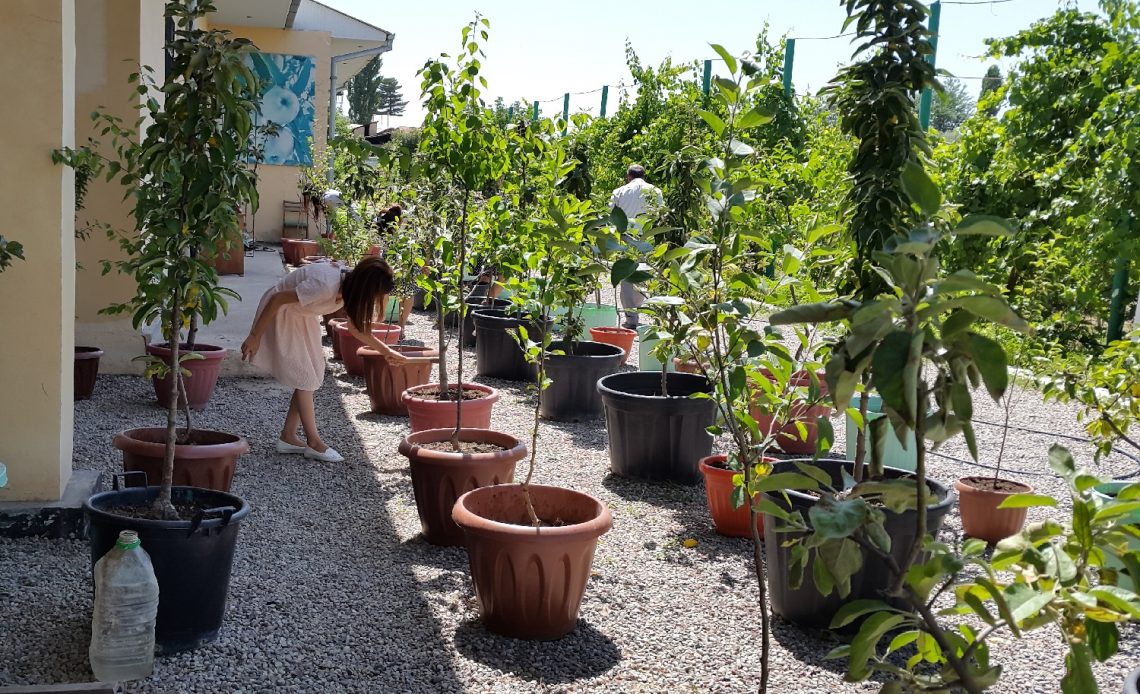

We’re here to help! Wild Yards is a completely free website that is 100% dedicated to helping you create a wildlife-friendly, sustainable yard. Read more
WildYards is reader-supported. When you buy a product through a link on our site, we may earn a comission. Every product is independently selected by our (obsessive) editors and our reviews are unbiased and objective. Read more about our mission or our privacy policy.
Small backyards and apartment balconies restrict what you can grow. And when those outdoor spaces receive full sun, it can make finding plants for your container garden difficult. You might even think that trees are off the table completely. But we have good news — there are a variety of small trees that grow well in sunny locations. Today, we’ve selected some of the best small trees for pots in full sun to help you get started.
Citrus trees, fig trees, and olive trees allow you to make the most of your limited garden space by providing you with homegrown fruits. Evergreen trees, like the Dwarf Mugo Pine and the Dwarf Italian Cypress, provide yearlong greenery. And Ornamental Cherry and Crabapple trees decorate your tiny backyard with gorgeous blooms in the spring.
9 Best Small Trees for Pots in Full Sun
Tiny backyards and apartment patios often restrict you to growing dwarf trees in pots. Some small backyards are located entirely in the shade, making finding small trees to suit the space even trickier. But if your little backyard gets full sun, you may be wondering which trees will work for you. Here are 9 fantastic small trees that can tolerate 6+ hours of sunlight per day.
Meyer Lemon (zones 4 through 11)
Citrus trees are a popular choice for container and patio gardens. These trees grow exceptionally well in full sun, and they tend to produce more fruit than their taller relatives. The Meyer Lemon tree is a delicious hybrid cross of a lemon tree and an orange tree. The resulting fruits aren’t the tart, ultra-sour lemons you’re used to buying from the grocery store. But rather, they’re mild and sweet. You can peel them and eat them straight from the tree, instead of saving them for baking or making lemonade.
Meyer Lemon trees max out at around 8 feet. Lemons can be harvested between October and March. These trees are self-fertile, so you don’t have to purchase more than one if you don’t want to. Plant your Meyer Lemon tree in a mixture of cactus potting soil and compost. Water the tree whenever the soil feels dry about an inch down, so roughly every other day.
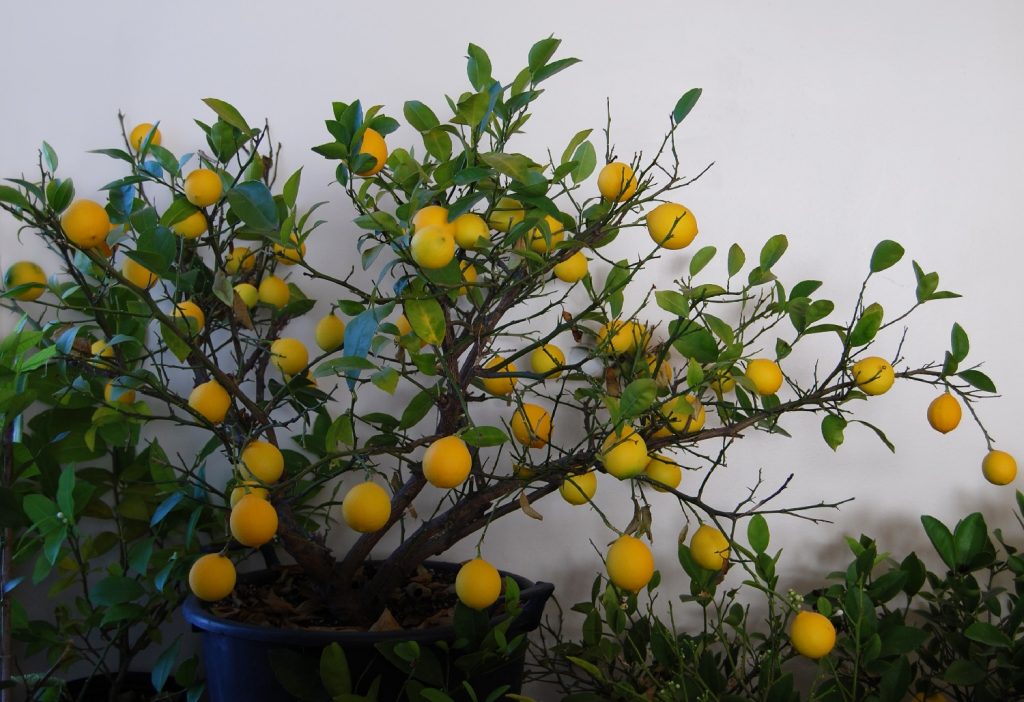
‘Coralburst’ Crabapple (zones 4 through 8)
Beautiful and compact, the ‘Coralburst’ Crabapple tree is covered in coral-colored flower buds that open to produce delicate pink blooms every spring. These sweetly-fragrant flowers attract tons of pollinators, from butterflies to bees. And in the fall months, these trees can bring even more wildlife to your yard. Birds, squirrels, and other hungry foragers love to nibble on the Crabapple’s orange fruits.
‘Coralburst’ Crabapple trees have a moderate growth rate. They reach 10 feet at maturity and have a maximum spread of 15 feet. It’s best to plant these trees in moderately fertile soil that drains well, so it’s not sitting in water. Once established, this tree is incredibly drought-resistant, only requiring weekly waterings. Overall, the ‘Coralburst’ Crabapple is an aromatic, colorful addition to your small patio garden.
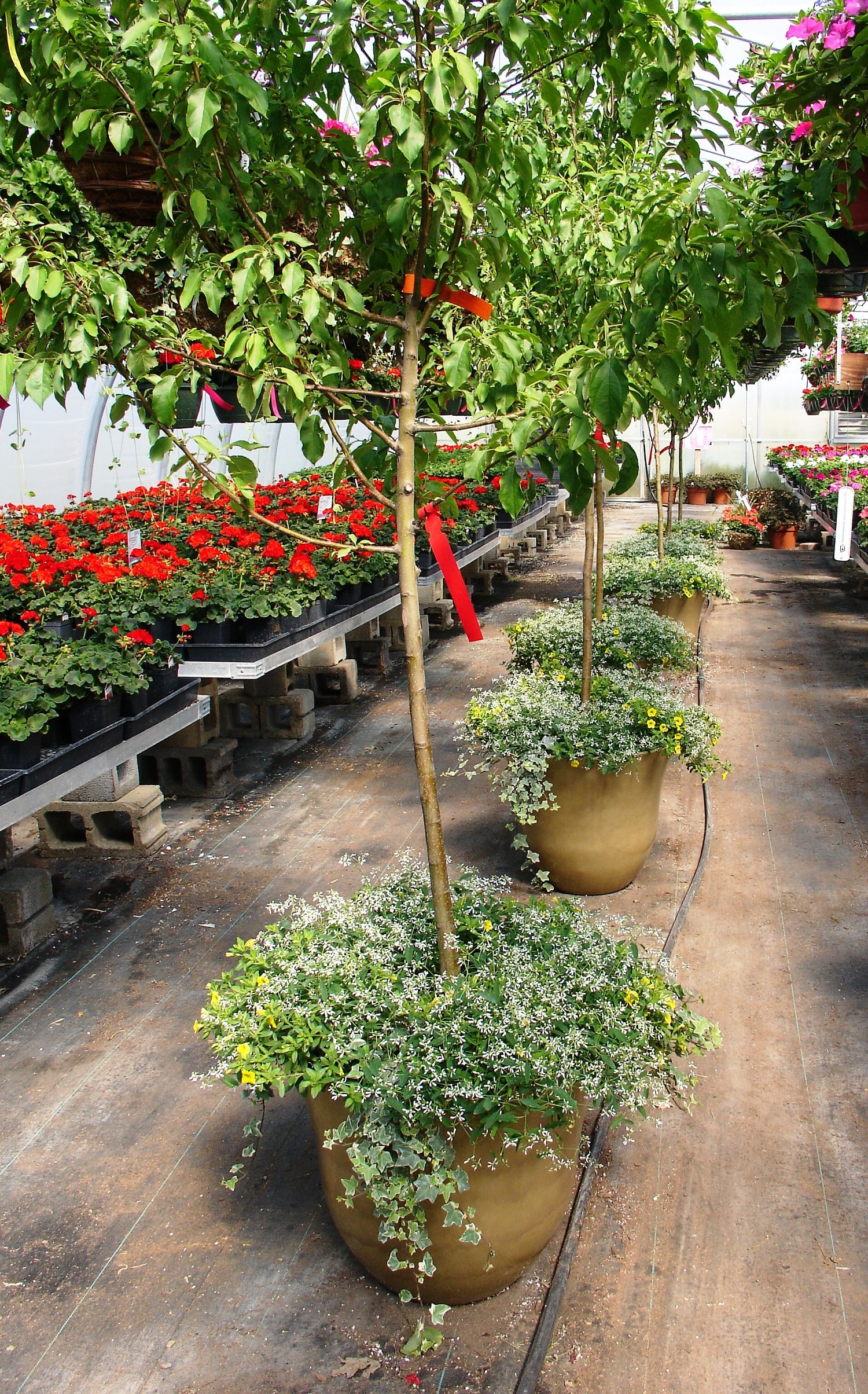
Dwarf Mugo Pine (zones 2 through 8)
This tree’s short stature of 5 feet relative to its wide spread of 10 feet makes it an interesting addition to your potted garden. The Dwarf Mugo Pine tree is slow-growing, but it performs best in full sun in nutrient-rich, well-drained soils. Its hardy nature and easy care requirements make it a fantastic ornamental for your potted patio garden.
As a pine tree, this is an evergreen that produces deep green needles throughout the year. The foliage may take on a lime or yellow-green color during the winter months when sunlight is scarce. While the Dwarf Mugo Pine enjoys regular weekly waterings, it’s incredibly drought-tolerant, so it’s a good choice for anyone with a small backyard space who lives in the Southern portion of the U.S.
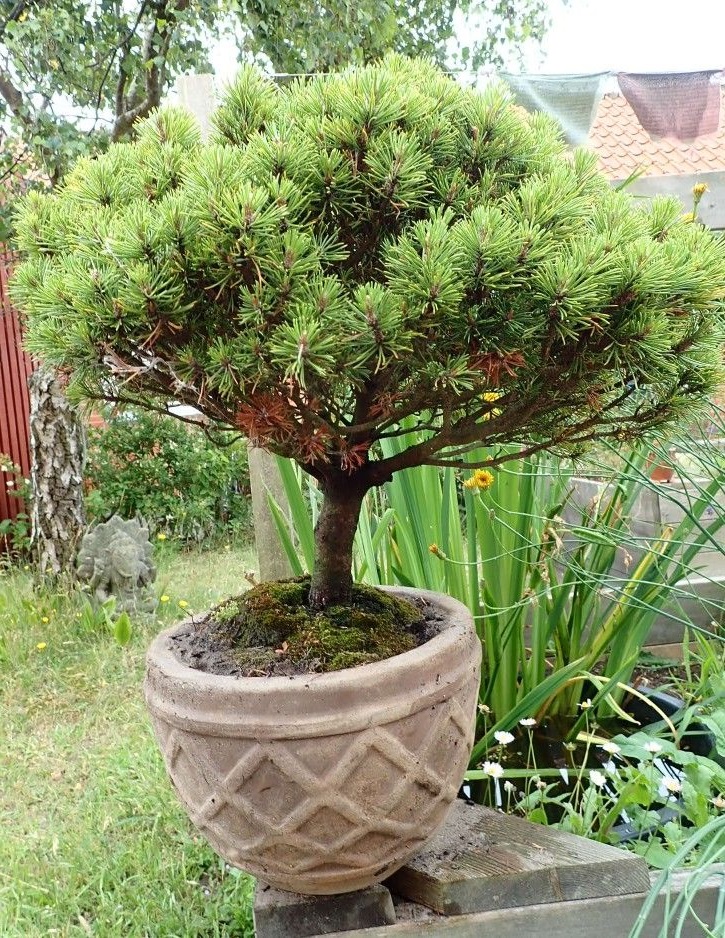
Vitex (zones 5 through 9)
Also known as the Chasteberry tree, Vitex has been used to treat hormonal conditions for centuries. This medicinal plant is hardy and low-maintenance, the perfect choice for anyone who has limited garden space and equally limited time to tend to their plants. Vitex trees thrive in full trees sun, where they grow at a moderate pace.
In the early summer months, the Vitex tree produces clusters of pretty blue-purple flowers along tall stalks, which contrast nicely with the plant’s muted green, bushy foliage. Vitex trees prefer moderately fertile soil that drains well. They don’t need to be fertilized, or even pruned, but they do need to be watered once or twice a week, especially during dry spells. This will help encourage growth so your Vitex can reach its maximum height of 15 feet.
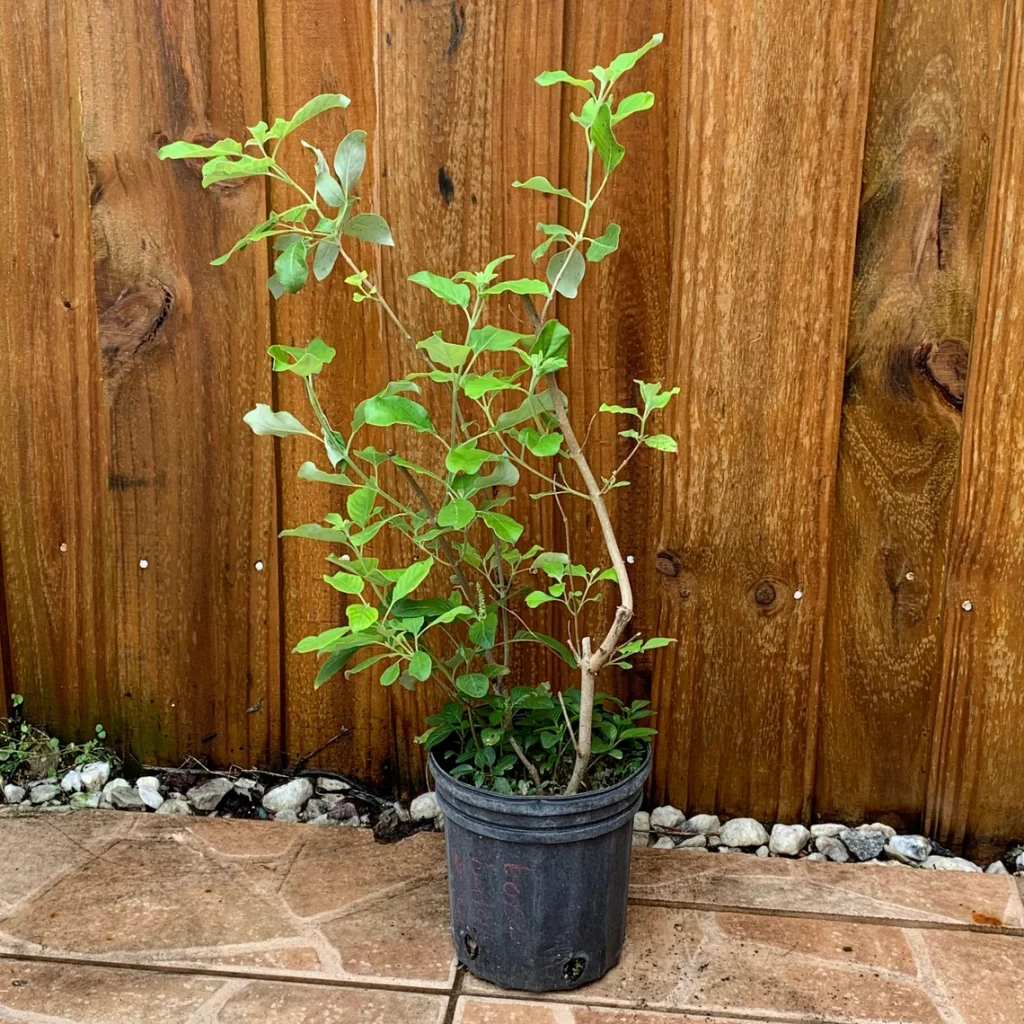
Sikitita Olive (zones 4 through 11)
Featuring silvery green foliage similar to other Mediterranean natives, like bee-favorite rosemary and easy-growing thyme, the Sikitita Olive tree produces earlier than most other olive trees. You can harvest a multitude of sweet and savory olives between October and November to make salads, sauces, and pickled vegetable mixes.
The Sikitita Olive tree doesn’t just grow well in full sun, it needs full sun to thrive. Because it only grows to be 10 feet tall, it’s well-suited to growing in pots. Plant your Sikitita Olive tree in well-drained soil, being sure to water it thoroughly whenever the soil dries out. This tree is self-fertile, so it can produce on its own. Feed your Sikitita with a nitrogen-rich fertilizer like 17-6-10 to help improve production.
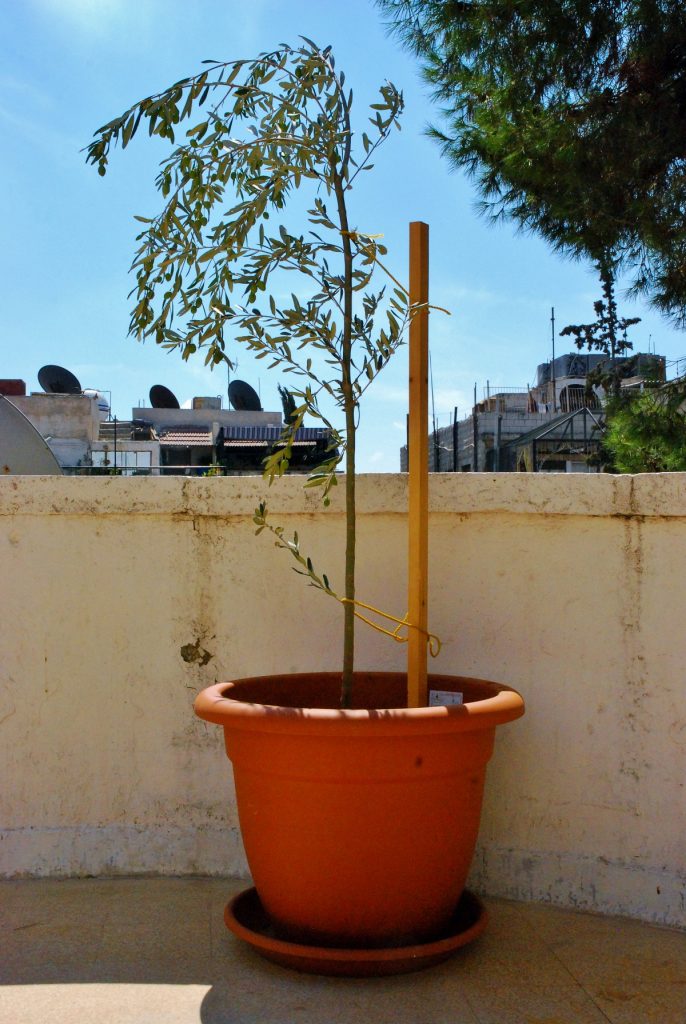
Dwarf Italian Cypress (zones 8 through 10)
The Dwarf Italian Cypress tree’s narrow linear shapes make it a dramatic ornamental choice for small garden spaces. These trees are perfect for growing in pots on opposite sides of exterior doorways or lining up along a bare wall of your house. Though these trees are slow-growing, they can tolerate full sun conditions very well. At 10 years, these trees reach 7 to 9 feet tall. At maturity, they can grow to 25 to 30 feet, but they can be trimmed back over the years to maintain their small height.
Dwarf Italian Cypress trees are fairly low-maintenance. They need to be pruned regularly to maintain a manicured appearance. And they’re fairly drought-tolerant, too, requiring only weekly waterings once they’re established. For best results, grow your Dwarf Italian Cypress in soil that drains well and use a general-purpose fertilizer to feed it every spring.
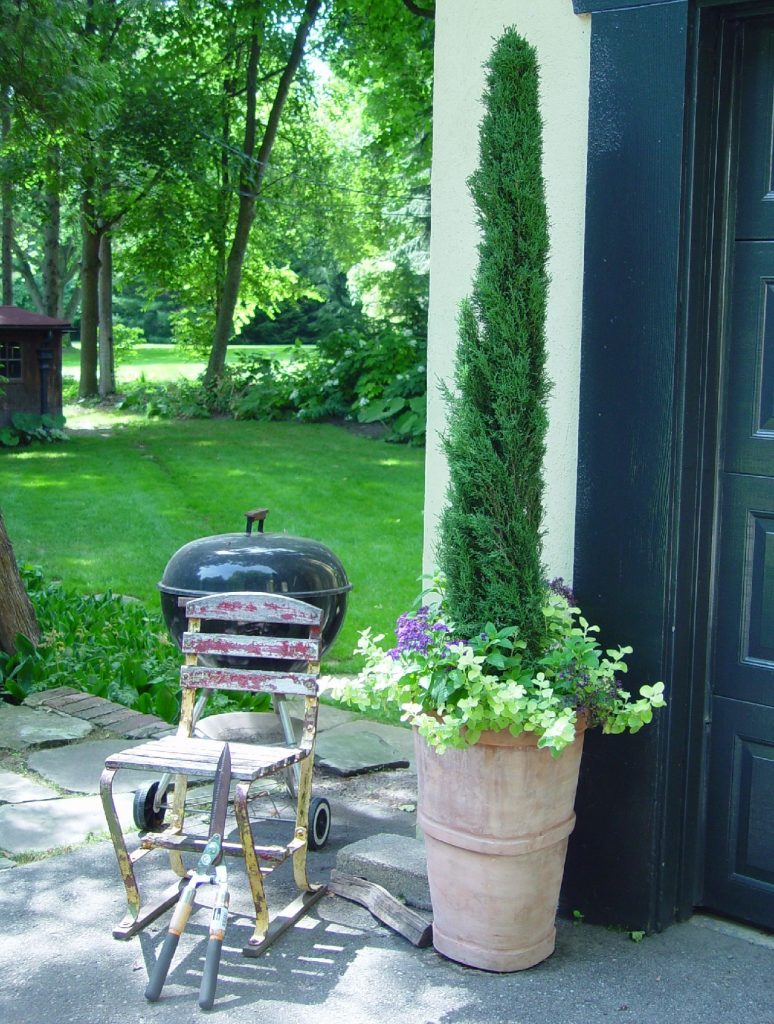
‘Red Dragon’ Japanese Maple (zones 5 through 8)
With a thick trunk, twisting branches, and eye-catching red leaves that cascade in a weeping fashion, the ‘Red Dragon’ Japanese Maple tree is a breathtaking choice for your patio garden. These trees max out at 12 feet, and grow just as wide, giving them an attractive uniform shape. The best part about the ‘Red Dragon’ Japanese Maple is that it’s highly adaptable, growing well in partial shade and full sun conditions.
This variety of Japanese Maple can grow well in nutrient-poor soils as long as it’s well-drained. They prefer to be watered regularly and don’t need to be fed to produce their stunning foliage. This tree’s gorgeous leaves make it an excellent focal point for your small garden from spring, when new leaves emerge a bright cherry red, to fall when mature foliage takes on a rich scarlet hue.
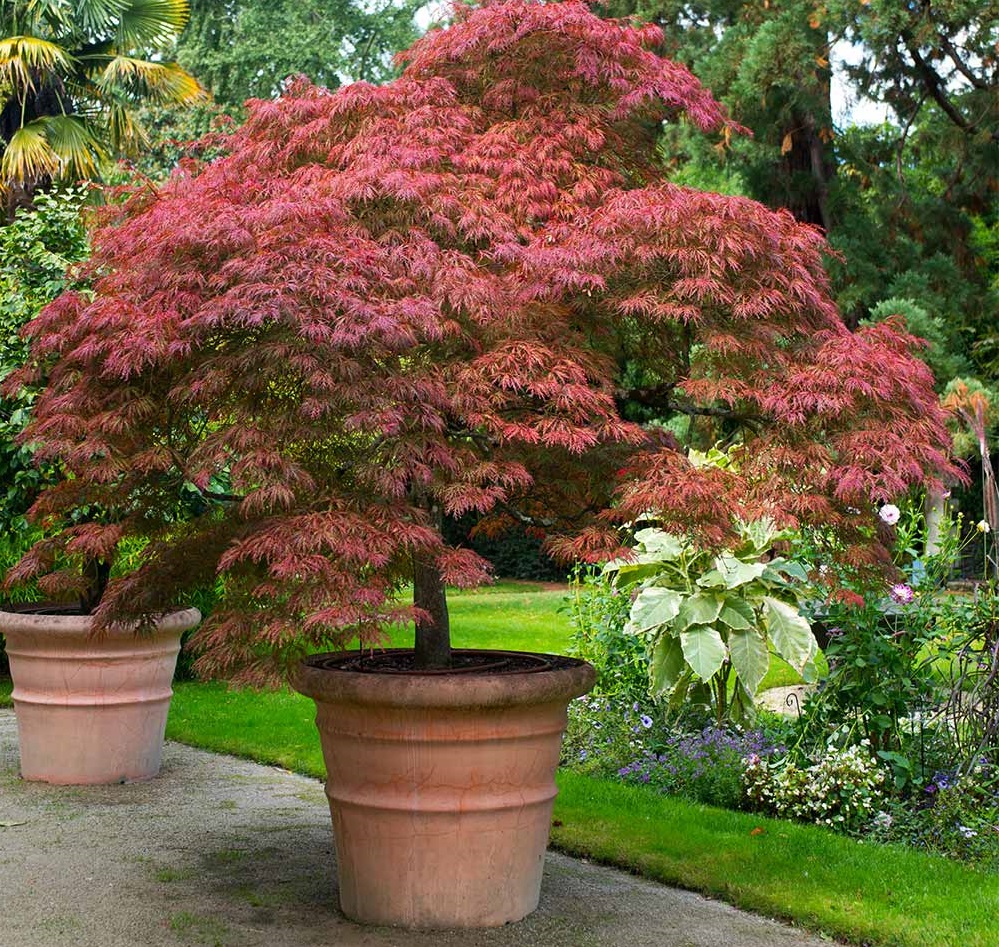
LSU Purple Fig (zones 7 through 10)
Figs are delicious picked straight from the tree, but they make excellent preserves, too. The LSU Purple Fig tree produces early, usually in its first year, and matures at 5 years, when it reaches its maximum height of 10 feet. This fig tree is self-fertile and requires very little care. All it needs to produce is to be planted in full sun in well-drained soil where it can be watered twice a week.
The LSU Purple Fig tree was created by the Louisiana State University College of Agriculture to be disease-resistant and to produce more fruit than other fig trees. So with very little effort, you can enjoy fresh figs every year between July and October. The LSU Purple Fig is well-suited to the Southern and coastal regions of the United States, where humidity is high and the temperatures are even higher. It’s perfect for full-sun container gardens.
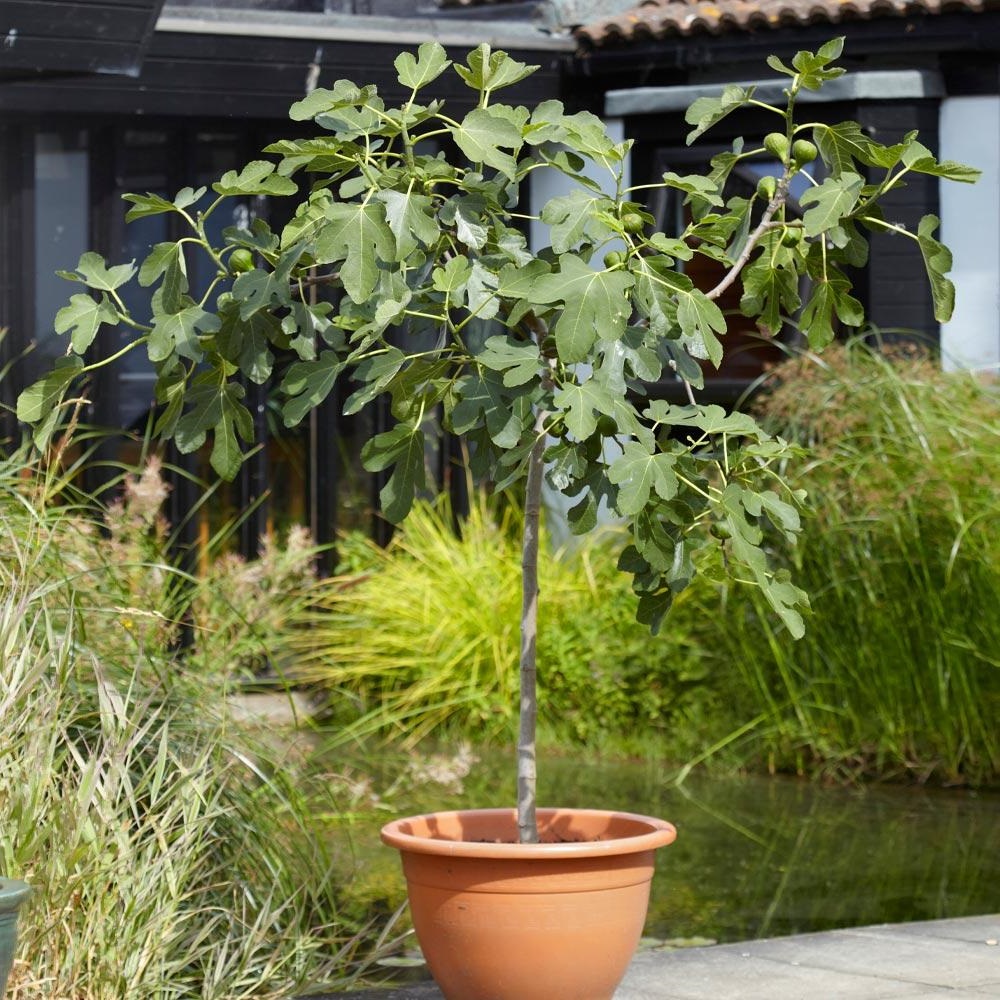
Snow Fountains Weeping Cherry (zones 5 through 7)
You don’t have to have a huge yard to grow a weeping tree. Snow Fountains Weeping Cherry trees have sturdy trunks with gray to brown bark and oval, bright green leaves that cascade around them like vines, sometimes reaching down to the ground. In the spring, each branch is covered in white blossoms that draw the attention of local pollinators.
The Snow Fountains Weeping Cherry tree makes a lovely focal point when grown in a decorative pot. Plant these trees in full sun and in soil that drains well. Keep the soil moist, but not muddy, by watering it moderately every other day to every third day. And while these trees certainly don’t need to be fed to perform well, giving them a slow-release general-purpose fertilizer every spring will help boost flower and foliage production.
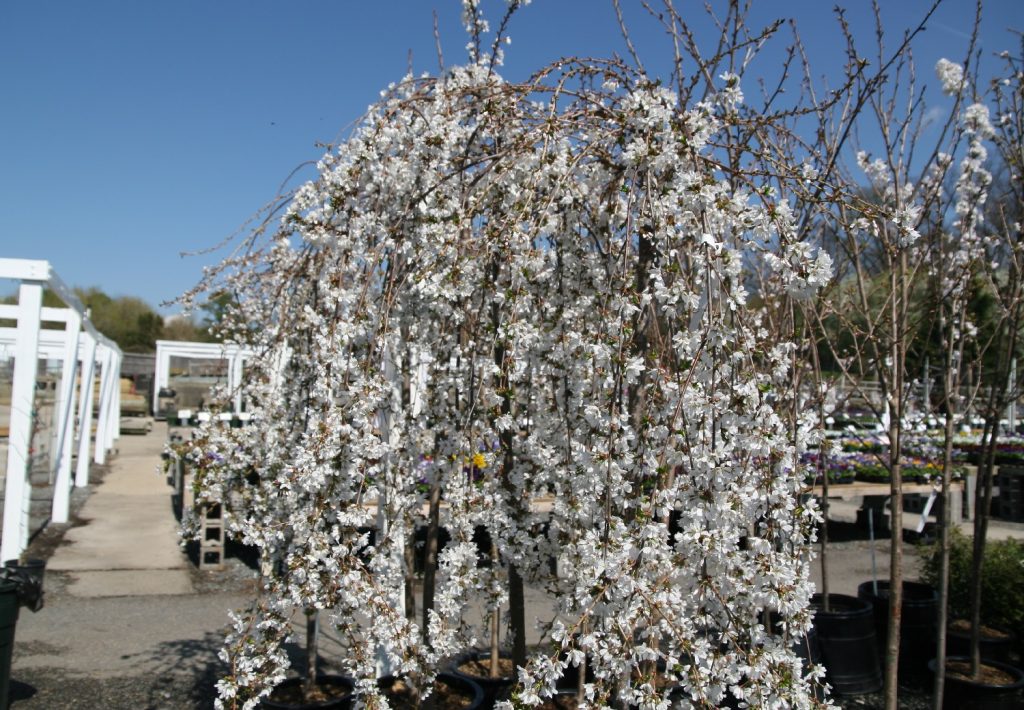
Growing small trees in pots: a few extra tips
Whichever trees you choose to grow in your small garden, be sure to plant them in well-drained soil. Soggy soil contributes to root rot, which can be fatal to any plant. Additionally, you should check your plant’s soil regularly, as trees that are grown in pots and under full sun dry out faster than those grown in the shade.
No matter how tiny your growing space is, there’s a tree to help you fill it! With the help of these 10 best small trees for pots in full sun, you can finally turn your little backyard into the landscape of your dreams.
